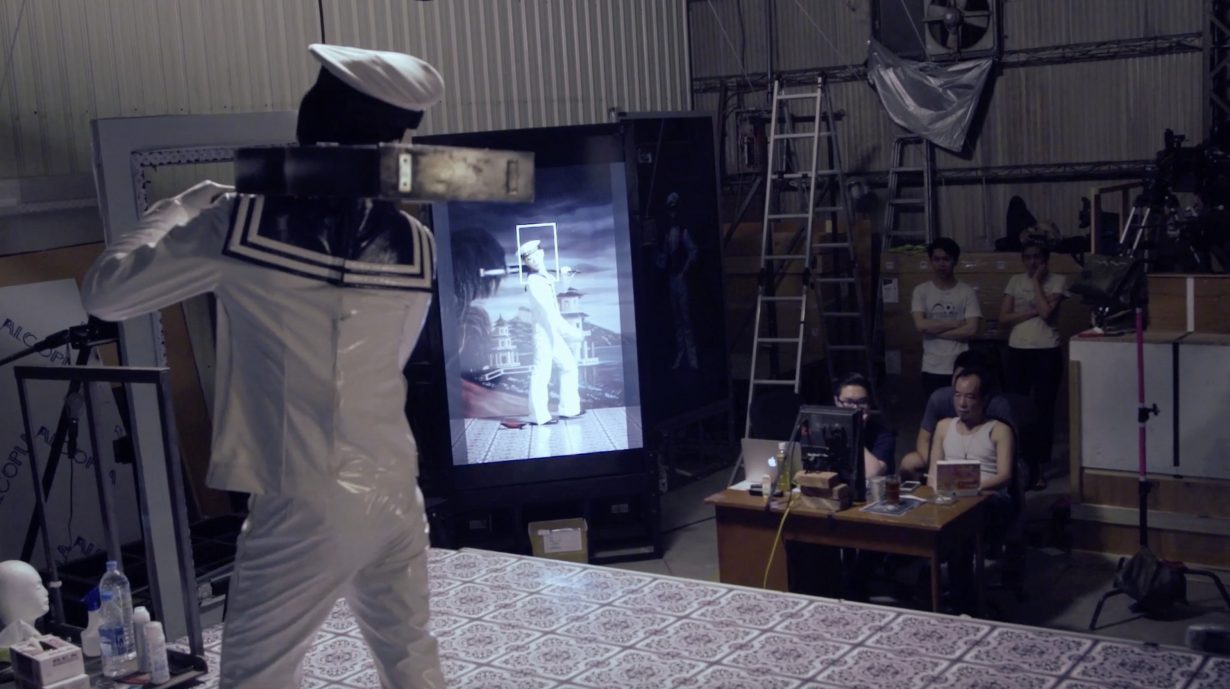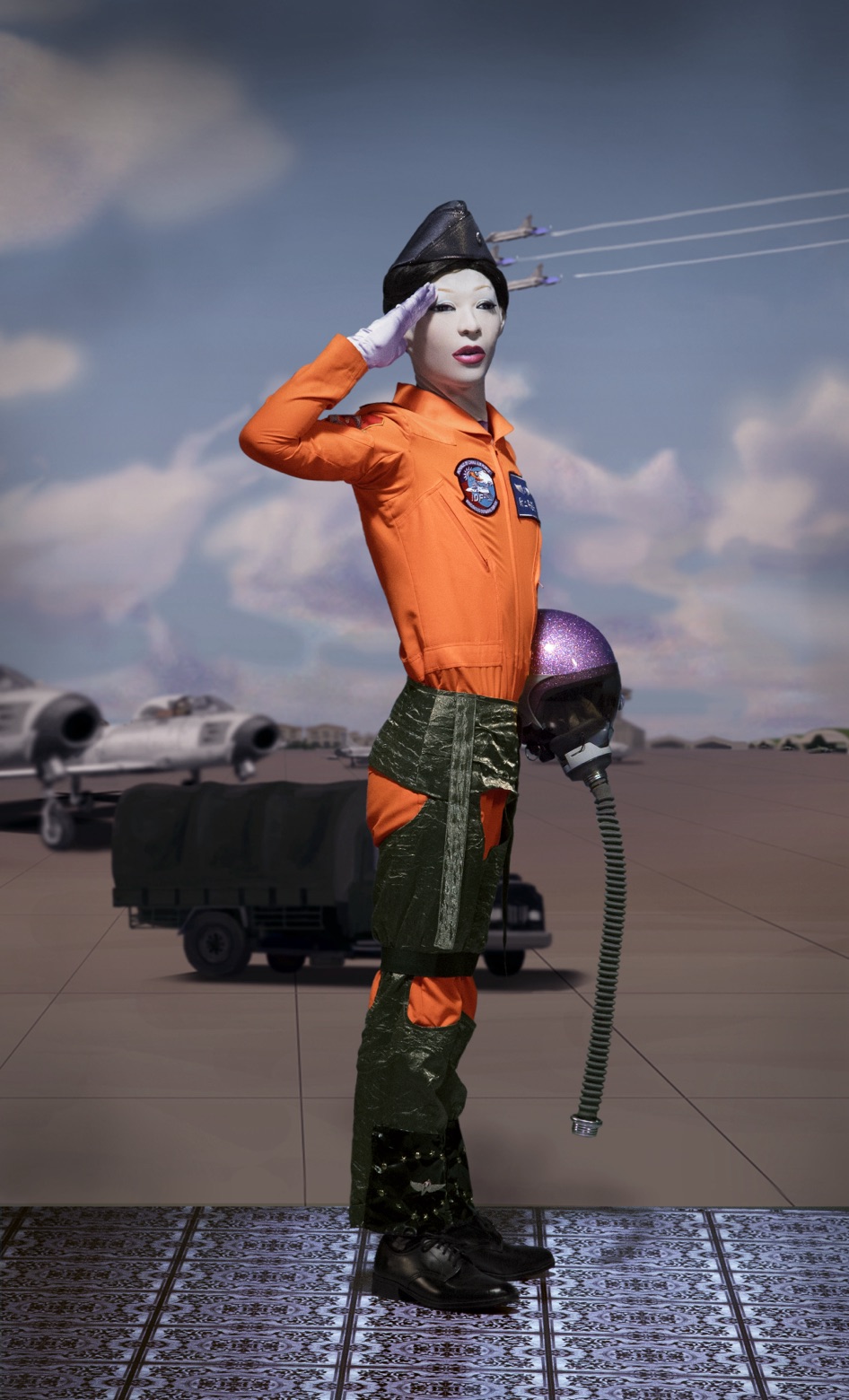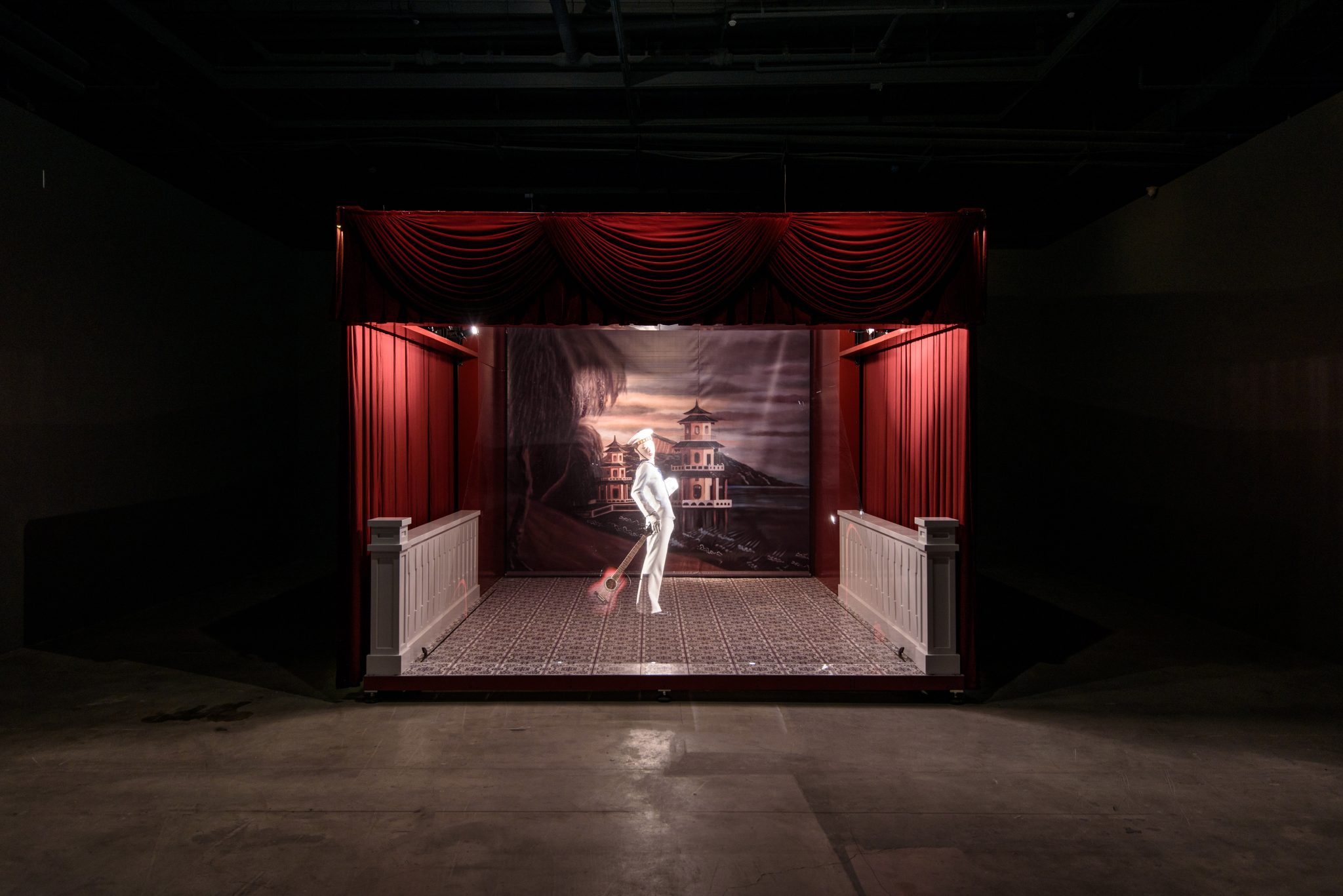Showing for Tina Keng Gallery at Art Basel in Basel, Wu explores the social, political and cultural construction of his native Taiwan
Best known for works that blend painting and photography into his own particular medium, he conflates and toys with the imaginary and the real in order to explore the construction, in terms of culture, sociopolitics and identity, of his native Taiwan. Wu was born in 1956, so it’s a history he has largely experienced, from Taiwan’s existence in the form of a one-party state under martial law to a multiparty democracy; from a time when the nation required economic aid (from the US) to what’s now known as the Taiwan ‘Economic Miracle’ that came accompanied by industrialisation, alongside fiscal and social reform through that latter part of the twentieth century. While his work most directly references the stories of his homeland, it also, importantly, speaks to the ways in which history and culture are constructed and reconstructed everywhere around the world. A reminder, if you like, that the past is always imagined and reimagined through the lens of the present. And a reason why Wu’s work, which has evolved through a variety of styles – from neoexpressionist and his own take on social-realist paintings (through the 1980s and early 1990s), to the multimedia works (developed from the 1990s through to the present) that artfully blend elements of painting, photography, theatre and performance into works that continue to reference the past but are firmly rooted in the contemporary moment – has been shown on major international platforms, from the Taiwanese Pavilion at the Venice Biennale (2015) to the Kochi–Muziris Biennale (2016) and solo exhibitions everywhere from New York (2010) to Madrid (2017). And now, the Unlimited sector of Art Basel.
There Tina Keng Gallery will present Wu’s single-channel video installation Farewell, Spring and Autumn Pavilions (2015), first presented in a former prison that housed the Taiwan Pavilion at the Venice Biennale. The protagonist, wearing a latex mask with a garishly painted face and dressed in an old-fashioned, white, latex, sailor’s uniform (which makes the scene feel both nostalgic, kinky, knowing and darkly humorous,) comes out before a staged, painted backdrop, leaning on a bright pink acoustic guitar. All shiny surface, he looks like a fly trapped in amber. He marches, with a theatrical swagger on the spot in time to the music, his feet never leaving the tiled ground. He appears to be saying goodbye as he starts actually marching, his guitar now slung over his shoulder as if it were a rifle (it later turns out to be collapsible prop). But it’s ultimately unclear if its him that’s moving or the background behind him, through scenes of land and sea. As if he were a part of a dream, or a ghost. But whatever journey he’s on, it has the feel of a special effect, a piece of theatrical trickery. And we get the impression that wherever he is going (perhaps to war) he’s not going to need the guitar. He (although his gender is profoundly queered by the mask and the costume) enters to the music of ‘Goodbye Harbour’, by Wen Hsia, who became popular during the 1950s and 1960s, and later became a screen idol of Taiwanese cinema. The installation is flooded with a sense of nostalgia, but amid that there is a hidden darkness, not just because the song is about departure and longing, but also because Wen Hsia was known for his adaptations of Japanese songs (so called ‘mixed blood’ music) with Taiwanese Hokkien lyrics, which in turn allude to the lasting impact of the five-decade occupation of Taiwan by Japan. Many of Wen Hsia’s works (99 out of his 1,200 recordings) were banned during the period of martial law (1949–1987).

As the character marches on, he changes costume, from sailor to captain, to jet fighter pilot as if marching through Taiwan’s military history, saluting then waving before finally leaving the scene. Only to return as a ghostly projection in front of the screen.
Like much of Wu’s work over recent decades, Farewell, Spring and Autumn Pavilions is as much a march through the history of art as it is history itself. It embraces the techniques and styles of burlesque theatre and cabaret, the artifice of studio photography and the backdrops of popular theatre, historical and contemporary cinema and video technologies, as much as it does the traditions of ‘fine art’. And as such, like many of Wu’s other works, it reflects on a world increasingly experienced through mediation — both in terms of developments in media technology, and in terms of memory, forgetting and unexpected, haunting recall. Similarly, the artifice of Wu’s work resonates, poignantly, with our current era of fake news and continuing cultural propaganda. This isn’t about then, you think after a while; it’s now. A now when many people are still working to untangle and repair the damage of colonial pasts and traumas (both physical and mental) passed on from generation to generation. Just as Wu’s sailor rearranges one uniform to be the next as he migrates through decades of advancement in military technology: a casual wardrobe rearrangement for him signalling the potential of greater violence to be done to others. A potential that is currently experienced in Taiwan, with the threats to its sovereignty, but also being realised to tragic effect in conflicts in Europe and the Middle East.
In Farewell, Spring and Autumn Pavilions while the backdrops change, the central figure appears to move but remains static, permanently saying goodbye. And we’re reminded that, for all the kitschy, gaudy colours of popular culture that are present, we’re looking at a sorrow that is internalised within the tragedy of individual isolation. And that this is not just about the condition of conflict, the threat of it, or the past, but also about the way in which so many of us experience the present: on our own, staring at a smartphone screen. All of which is perhaps where Wu’s talent as both an artist and storyteller most obviously blossoms: in his ability to tell tales that are both general and personal – the latter being how most of us experience our own marches through time.

About Wu Tien-Chang
Born in 1956 in Changhua, Taiwan, Wu Tien-Chang lives and works in Taipei, Taiwan. Wu received a bachelor of fine arts from the Chinese Culture University (1980). Wu’s work reveals the contradictions of the photographic medium, with its apparent reality, yet often contrived and fictitious nature. He makes costumes, props, and backdrops for his elaborate and surreal sets, and directs his actors to perform. He digitally recombines, deforms, and reshapes dozens of snapshots taken during carefully staged sessions, to create theatrical and painterly photographs. The resulting works depict surreal and haunting scenes, deeply steeped in Wu’s interests in photographic theories and Taiwan’s complex history and culture.
Tina Keng Gallery at Art Basel in Basel 2024
Venue|Messe Basel
Unlimited Sector Booth|U59
Participating Artist|Wu Tien-Chang
Galleries Sector Booth|E14
Participating Artists|Yun Gee, Su Xiaobai, Sopheap Pich
